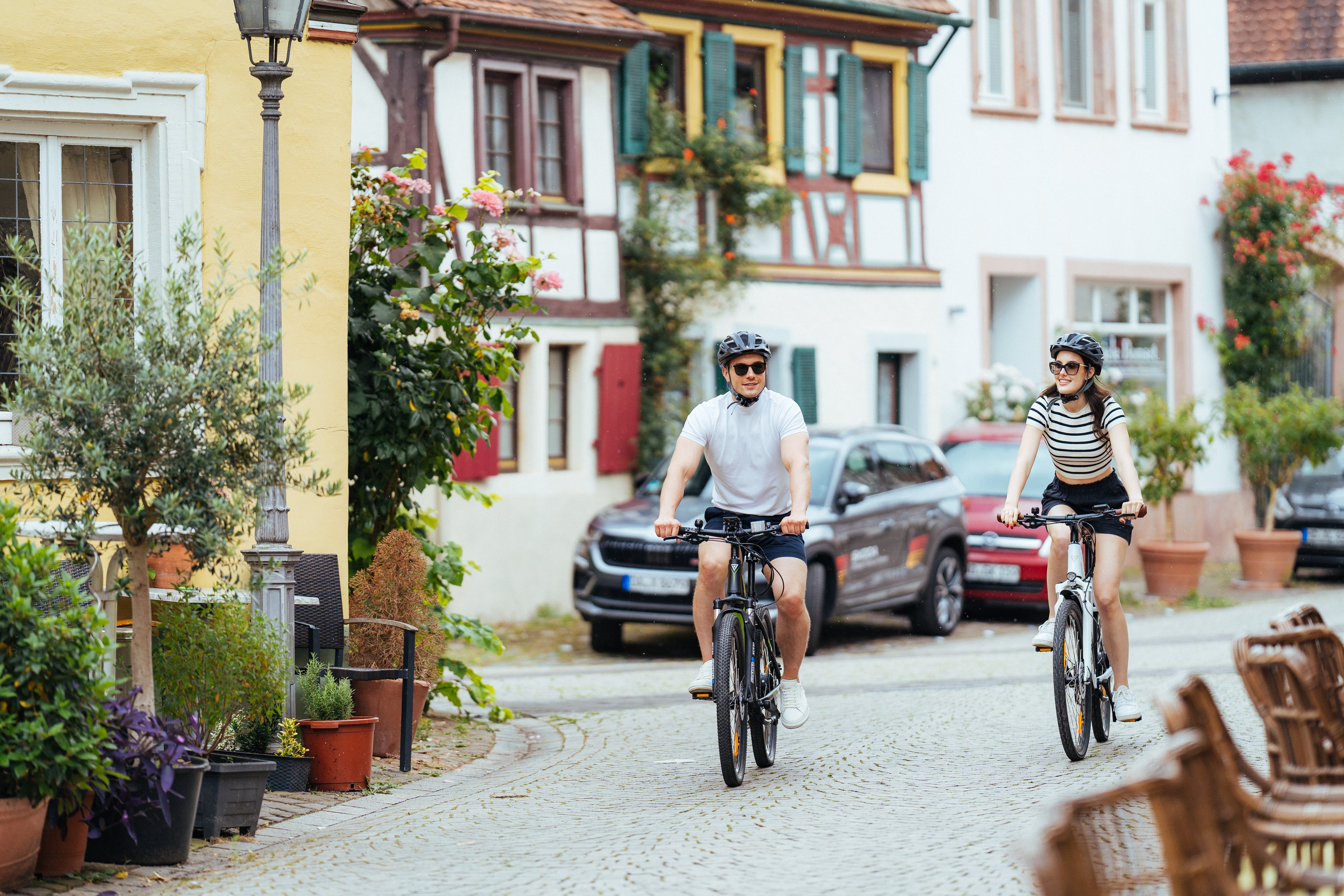Cycling in the city is not only an environmentally friendly mode of transport but also a healthy lifestyle choice. However, the urban environment presents various challenges that can often frustrate cyclists. This article will explore some common cycling challenges and offer effective strategies to tackle them.
Traffic Congestion
Challenge:
Urban traffic congestion often makes cyclists feel uneasy. During peak hours, the high volume of traffic and the close proximity of vehicles increase the risk for cyclists. At these times, cyclists must navigate not only motor vehicles but also share limited space with other cyclists and pedestrians.
Solutions:
1. Avoid Peak Hours: To reduce the stress of peak times, cyclists can choose to travel outside the early morning and late evening rush hours. For instance, departing half an hour earlier or later can help avoid the most congested periods. Additionally, understanding local traffic patterns can assist in selecting the optimal cycling times.
2. Use Cycle Lanes: More and more urban areas are introducing dedicated cycle lanes, which are specifically designed for cyclists and can significantly enhance cycling safety. Cyclists should make use of these lanes to minimize the risk of competing with motor vehicles for space. It's also important to pay attention to the signs and markings on cycle lanes to ensure riding within the designated areas.
3. Learn Traffic Rules: Understanding and obeying city traffic rules is a fundamental responsibility for every cyclist. Cyclists should be familiar with traffic signals, signs, and right-of-way rules, and maintain a safe distance from vehicles. Extra caution is necessary at intersections, where cyclists should be aware of traffic lights and the movements of turning vehicles to ensure their own safety.
Poor Road Conditions
Challenge:
Urban road conditions can be quite inconsistent, with potholes, cracks, and waterlogging often troubling cyclists. These poor conditions not only affect the comfort of the ride but can also lead to unexpected falls or damage to the bicycle.
Solutions:
1. Choose Suitable Routes: Plan your cycling route in advance and opt for roads with better conditions to effectively avoid poor road surfaces. Use map applications or consult with other cyclists to find routes that are more bike-friendly. Especially after rain or during construction periods, choosing flat and solid roads is particularly important.
2. Regularly Check Your Bicycle: Ensuring that your bicycle’s tyres, brakes, and suspension system are in good condition is fundamental for handling complex road conditions. Regularly inspecting and maintaining your bicycle, and promptly replacing worn-out parts, can enhance both safety and comfort. Carry simple repair tools, such as a pump and puncture repair kit, for any unexpected issues.
3. Pay Attention to Avoid Obstacles: Increase your alertness while cycling and observe changes in the road surface to avoid potholes and obstacles. Maintain a proper speed during your ride to ensure you have enough time and space to maneuver around obstacles when you spot them, thereby reducing the likelihood of accidents.
Weather Changes
Challenge:
Unpredictable weather, especially rain and snow, can cause significant inconvenience and danger for cyclists. Wet and slippery roads, reduced visibility, and low temperatures increase the risk and require extra caution.
Solutions:
1. Wear Waterproof Gear: When cycling in the rain, wear waterproof clothing and non-slip gloves, and install mudguards to reduce splashing. This can greatly improve comfort and safety. Choose breathable waterproof materials to avoid overheating or getting cold and wet during long rides.
2. Adjust Cycling Speed: On slippery roads, cyclists should maintain a moderate speed and avoid sudden turns and braking to prevent skidding or losing control. Additionally, increase the distance from vehicles and other cyclists to ensure sufficient reaction time.
3. Check the Weather Forecast: Before heading out, check the weather forecast to understand the day’s conditions and try to avoid cycling in extreme weather. If the weather changes suddenly, find a safe place to take shelter and wait for better conditions before continuing your ride.
Safety Hazards
Challenge:
Cyclists face safety hazards, including traffic accidents, especially when sharing the road with motor vehicles. Enhancing safety awareness is crucial.
Solutions:
1. Wear Safety Gear: Always wearing a helmet is essential for a cyclist’s safety. Installing reflective strips and lights can increase visibility at night and in poor visibility conditions, reducing the likelihood of traffic accidents.
2. Choose Safe Parking Spots: Park your bicycle in guarded parking areas or where there is CCTV coverage. Use sturdy locks to prevent theft. In city centres and crowded areas, opt for official designated parking points.
3. Increase Self-Defense Awareness: Carry necessary self-defense tools, such as a whistle or pepper spray, to provide help in emergencies. Avoid cycling at night or in isolated areas, and choose routes with good lighting and human traffic to ensure personal safety.
Pollution Issues
Challenge:
Air pollution in cities negatively impacts cyclists’ health, especially on busy roads where exhaust and particulate matter concentrations are high, making it easy to inhale harmful substances.
Solutions:
1. Wear a Mask: In heavily polluted conditions, wearing a protective mask can reduce the inhalation of harmful substances. Choose masks with filtration capabilities, such as N95 masks, to more effectively block airborne pollutants.
2. Opt for Greenways: Whenever possible, cycle on greenways and through parks where air quality is relatively better and the environment more pleasant. When planning routes, prioritize these areas to enjoy fresher air and natural scenery.
3. Plan Routes Wisely: Avoid cycling on busy main roads for extended periods and opt for quieter, less polluted roads. This not only reduces exposure to air pollution but also enhances the enjoyment of the ride. Schedule breaks in areas with better air quality to rest and recover.
Despite the numerous challenges of urban cycling, cyclists can effectively overcome these difficulties through careful planning and appropriate preventive measures. We hope the strategies provided in this article will help cycling enthusiasts better cope with urban cycling challenges, enabling them to ride safely and enjoyably in the city.


Share:
Exploring the Advantages of Group Cycling
Start E-Biking from Earth Day